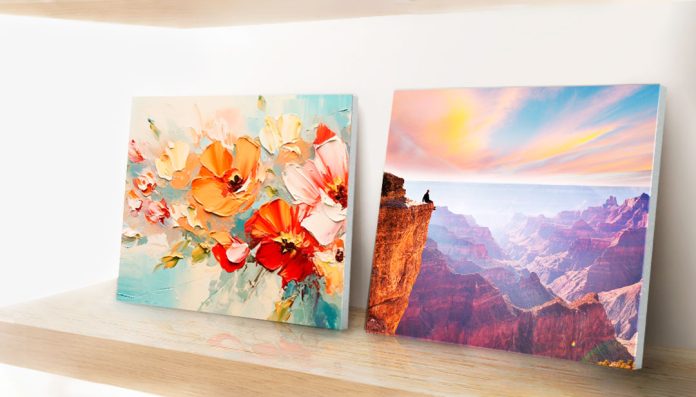When it comes to displaying art or photography, presentation is everything. The way your work is mounted and displayed can elevate its visual impact just as much as the image itself. Foam-mounted fine art paper prints strike a perfect balance between gallery-grade sophistication and everyday practicality, offering a professional look that’s surprisingly affordable.
These prints combine vibrant fine art paper with lightweight foam backing, creating a sturdy, elegant finish that’s easy to hang or frame. Whether you’re a professional photographer looking to showcase your best work or someone who simply wants to bring personal memories to life, foam-mounted fine art paper prints offer a clean, modern presentation that suits any space.
In this guide, we’ll explore five key things to know about these prints—from how they’re made to the premium materials involved, as well as how to display and care for them. If you’ve ever wondered whether foam-mounted fine art paper prints are worth it, you’ll find everything you need to make an informed decision below.
Table of Contents
- What Foam-Mounted Fine Art Paper Prints Actually Are
- The Difference Between Regular Prints and Foam-Mounted Prints
- Paper Quality and Printing Precision Matter
- Real-World Quality: Packaging, Presentation, and Value
- Displaying, Caring for, and Customizing Your Prints
- Why Foam-Mounted Prints Are a Smart Choice
- Frequently Asked Questions
What Foam-Mounted Fine Art Paper Prints Actually Are
At their core, foam-mounted fine art paper prints combine two essential elements: a high-quality giclée print and a sturdy foamcore backing. The result is a smooth, professional display that’s both lightweight and durable. Each print begins as a meticulously produced image using archival pigment inks, then mounted on a 3/16-inch white heat-activated polystyrene foamboard. This material provides structure without adding unnecessary weight, making it perfect for hanging or framing. See how these materials look in our video above.
Unlike traditional paper prints that can curl or wrinkle over time, foam-mounted prints maintain a flawless, flat surface. The mounting process not only protects the artwork but also gives it a finished appearance straight out of the box. Available in sizes ranging from 5×5 inches to 39.5×59.5 inches, these prints are as versatile as they are beautiful, with custom sizes available for unique projects.
It’s worth noting that while smaller foam-mounted prints can easily be displayed without frames, larger prints—typically 16×24 inches or above—should be framed to prevent potential warping. Still, even without a frame, these prints have a gallery-ready quality that enhances any wall or display space.
The Difference Between Regular Prints and Foam-Mounted Prints
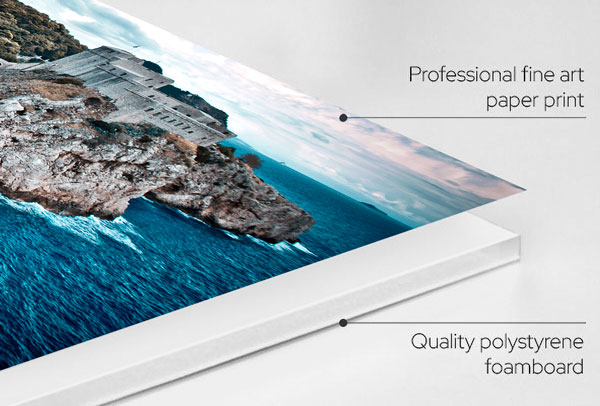
A standard fine art print is simply an image on paper. While stunning in its own right, it often requires extra care and framing before display. Foam-mounted fine art paper prints, on the other hand, are mounted directly to a foam backing that gives them strength, dimension, and longevity. This added support transforms a simple print into a presentation-ready piece of art.
One of the biggest advantages of foam-mounted prints is their durability. They resist bending, creasing, and surface damage, which makes them ideal for high-traffic environments or frequent handling. The foamcore backing keeps the artwork taut and secure, giving it a clean, professional appearance whether it’s propped on a desk, hung on a wall, or displayed in a frame.
Beyond durability, the aesthetic upgrade is undeniable. The backing adds subtle depth and shadow, giving your artwork a modern, elevated presence. Foam-mounted fine art paper prints are especially popular among artists and photographers who want to showcase their work without the hassle of traditional matting or framing right away.
Paper Quality and Printing Precision Matter
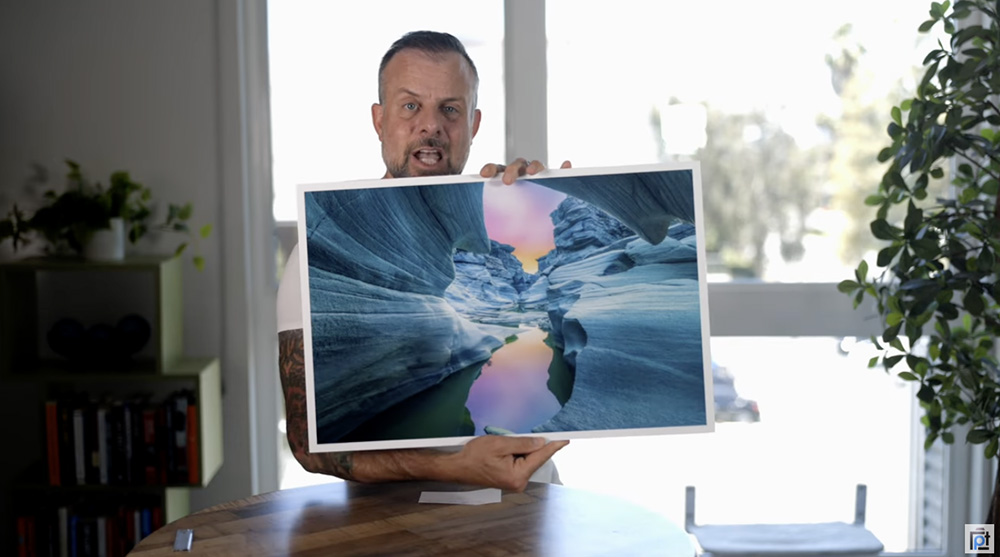
Not all prints are created equal, and the quality of the paper and printing method makes a world of difference. Foam-mounted fine art paper prints from Lumaprints are produced using the giclée printing process on premium fine art papers. Each paper type offers its own unique texture and tonal quality, allowing you to match the finish to your artistic vision.
The options include smooth matte papers like Archival Matte and Hot Press Smooth for crisp detail, Cold Press Textured Matte for a more tactile look, and Semi-Gloss or Luster finishes for images that need vivid contrast and depth. Metallic and Glossy papers enhance color vibrancy, while Somerset Velvet Fine Art Paper delivers a traditional, museum-quality feel. All papers are acid-free, ensuring the print won’t yellow or degrade over time.
Each foam-mounted fine art paper print is created using Canon giclée printers that are color-calibrated regularly. This ensures unmatched accuracy and consistency across every print. The aqueous pigment inks used can resist fading for over a century, so your artwork will retain its brilliance for generations. Combined with the precision of giclée printing, the final result is a print that’s rich in detail, depth, and true-to-life color.
Real-World Quality: Packaging, Presentation, and Value
Quality doesn’t end once the print leaves the printer. One of the most impressive aspects of foam-mounted fine art paper prints from Lumaprints is their careful packaging. Each print is wrapped in multiple layers of protection to ensure it arrives in pristine condition. Double cardboard sheets, bubble wrap, and secure plastic wrapping shield the artwork from impact during transit.
Many printing companies overlook packaging, resulting in dented or scuffed corners. Lumaprints goes above and beyond to prevent that. During an unboxing review, the foam-mounted print arrived perfectly protected—secured with precision and no movement inside the box. The attention to detail in packaging matches the quality of the print itself, reflecting the company’s commitment to customer satisfaction.
Equally impressive is the value. A 20×20-inch foam-mounted glossy print, for example, costs around $26 and delivers color accuracy and sharpness that rivals much more expensive products. Production time averages just two to three business days, making this an ideal option for artists on a deadline or anyone looking for professional-quality prints without a long wait. The result is a combination of quality, protection, and affordability that’s hard to beat.
Displaying, Caring for, and Customizing Your Prints
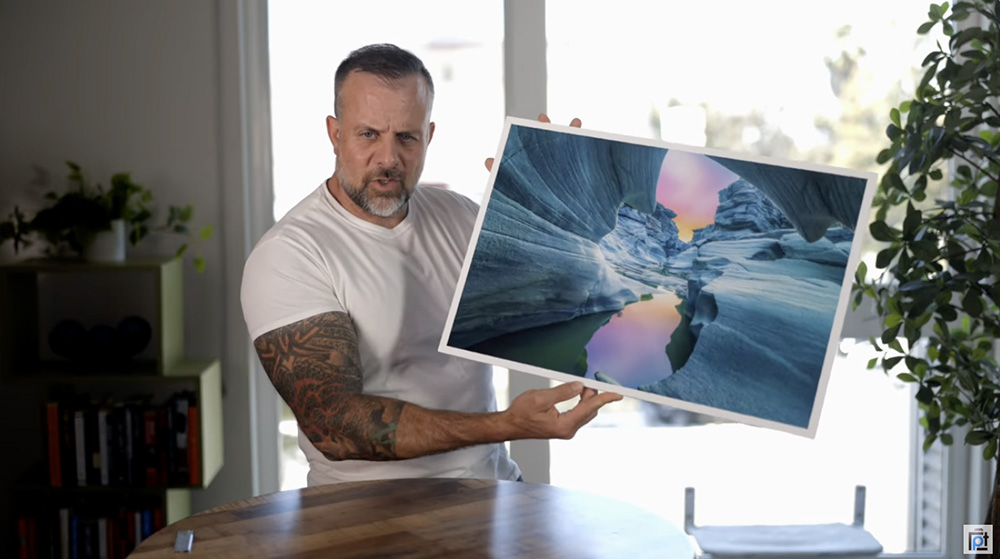
Once your foam-mounted fine art paper prints arrive, the fun begins—deciding how and where to display them. These prints are incredibly versatile and can be used in a variety of settings. Hang them directly on walls with adhesive strips, lean them against shelves for a casual gallery vibe, or frame them for a refined finish. Their lightweight construction makes them easy to handle, rearrange, and rotate with the seasons or your décor.
Caring for these prints is simple. To keep them looking their best, dust with a soft, dry cloth or feather duster. Avoid displaying them in direct sunlight, as prolonged exposure may cause fading over time. For extra protection, framing is always a smart choice—especially for large pieces or prints displayed in high-traffic areas.
Customization options add even more versatility. You can choose different bleed options depending on how much white border you want around the image—from full edge-to-edge printing to inset borders that provide visual breathing room. For ordering, simply upload JPG, JPEG, or PNG files in Adobe RGB color profile at 300 DPI. Lumaprints supports files up to 100 MB, ensuring even the most detailed images print beautifully. If you’re ready to create your own, visit Lumaprints’ foam-mounted fine art paper print page to get started.
Why Foam-Mounted Prints Are a Smart Choice
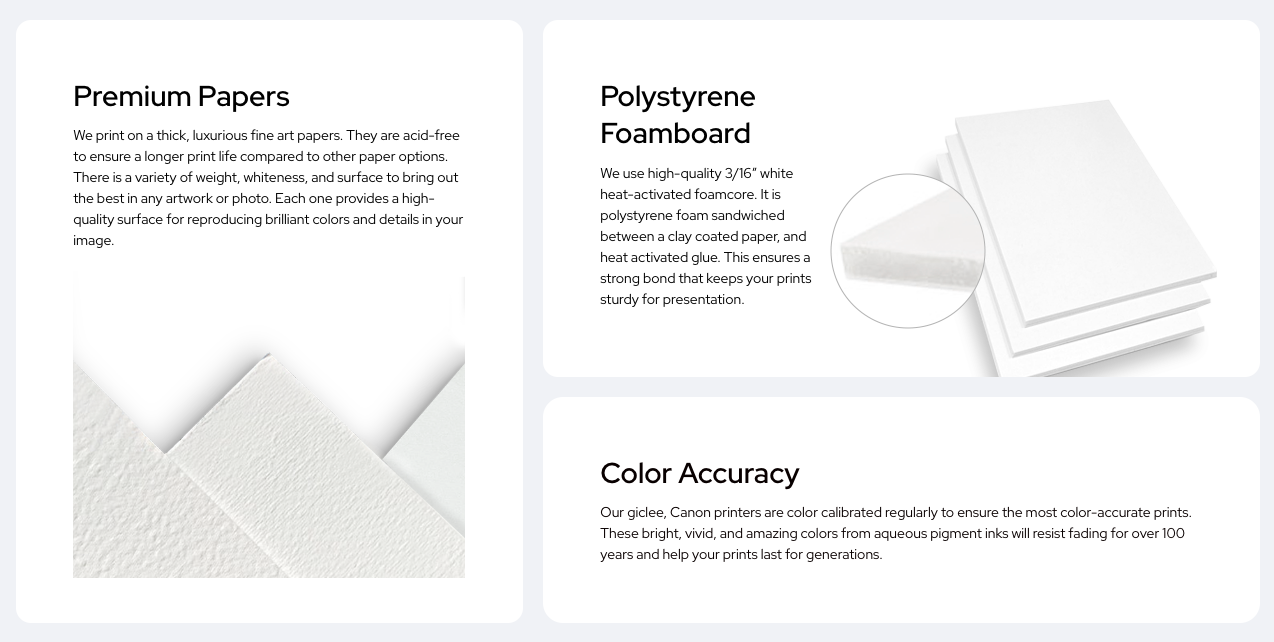
Choosing foam-mounted fine art paper prints is an easy way to elevate your photography or artwork without overcomplicating the process. They offer the best of both worlds—museum-grade image quality with the everyday practicality of a lightweight, ready-to-display piece. From vivid color reproduction to archival paper longevity, these prints are built to impress and endure.
For photographers, they provide a tangible way to appreciate digital work—something that too often stays confined to screens. For artists, they offer a professional presentation option that doesn’t require the expense or bulk of framing. And for anyone looking to decorate, they bring warmth, texture, and personality to walls in a way that feels effortlessly elegant.
With excellent print accuracy, secure packaging, and affordable pricing, foam-mounted fine art paper prints are a simple, reliable way to showcase creativity. Whether you’re printing personal photographs or professional artwork, these prints prove that presentation can be both refined and accessible.
Frequently Asked Questions
How long do foam-mounted fine art paper prints last?
When produced using archival inks and acid-free papers, these prints can last over 100 years without significant fading or discoloration, especially when properly cared for.
Can foam-mounted fine art paper prints be framed?
Yes. While they look great unframed, framing larger prints (16×24 inches or more) helps prevent warping and provides additional protection against damage.
What sizes are available?
Sizes range from 5×5 inches up to 39.5×59.5 inches, with custom sizing available for special projects or unique display needs.
What is the best way to hang foam-mounted prints?
Use lightweight adhesive strips or mounting hardware designed for foamcore. These allow for easy, damage-free hanging and repositioning.
How should I clean and maintain my prints?
Gently dust with a soft, dry cloth or feather duster. Avoid moisture and direct sunlight to preserve color and detail for decades to come.
Heads up: Clicking on our affiliate links and exploring our sponsored content helps us at no extra cost to you, and we only recommend gear we’re absolutely crazy about!

